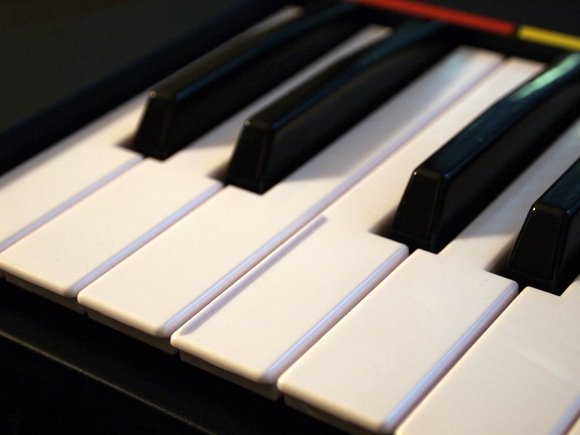
What if a gaping product hole for musicians were filled by a game company instead of a musical instruments company? There’s no need to imagine: pick up the new Rock Band 3 keyboard, and you’ll see what I mean.
Consider: most sub-$100 and compact keyboards have dumped 5-PIN MIDI DIN ports in favor of USB only – little comfort if you want to plug a keyboard into that DIY sound module or eBay treasure. (Alesis’ QS25 is one exception, but even a $150 M-Audio Oxygen is USB-only.)
And keytars? Fuggedaboutit. Strap-on keyboards or keytars are a great way to play keyboard lines, but they’ve tended to be freakin’ huge. They really do feel like strapping a full-sized keyboard on your shoulder, which can kill the joy of playing them. And the current “entry-level” model, Roland’s Lucina AX-09, has a street of US$600 or more. eBay bidders have made used items similarly pricey.
So, forget for a second that a game is involved. What if I told you you could get a cute, light little keyboard with MIDI DIN, intelligent MIDI mappings, and two great-feeling synth action octaves, all in a strap-on form factor with battery power, for $80?
Yeah. That’s what I thought. So whether you’re a hardened gamer or just looking for a nice, mobile keyboard controller, here’s an in-depth look at how MIDI works on the new Rock Band 3 Wireless Keyboard Controller – forever to be known to everyone outside Harmonix and Mad Catz as “the Rock Band keytar.”
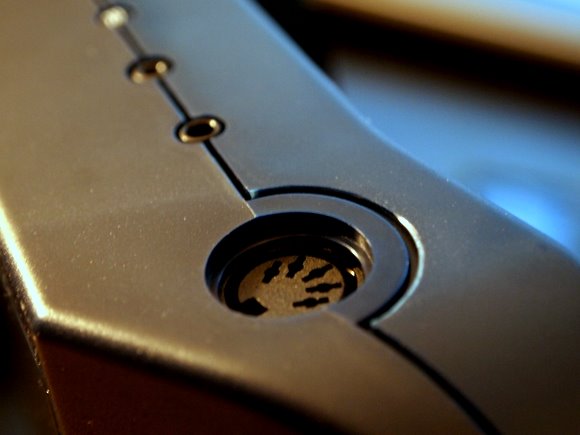
The Hardware, Impressions
Hardware specs:
- 25 velocity-sensitive keys. (Velocity already gives a leg up over some stuff you can get on eBay. No aftertouch, though.)
- TRS port for stomp or expression pedals. (Right now, that means the bass drum pedal, until we figure out a DIY solution. It uses a little 3.5mm jack; working on finding out voltage specs.)
- 1-axis touch strip which maps to modulation and pitch.
- 5-pin MIDI DIN port.
- Xbox 360 (or PS3) game pad, wireless Xbox operation. (For wireless MIDI, you’re on your own.)
- Three AA batteries. (No external power.)
- Optional stand accessory. (This looks cute; I didn’t pick it up yesterday but may yet.)
- 4.6 lbs.
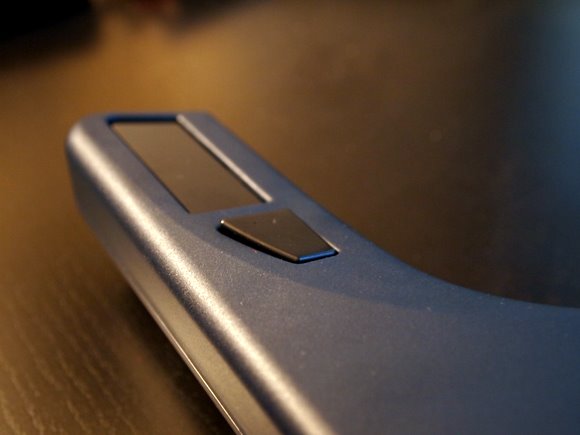
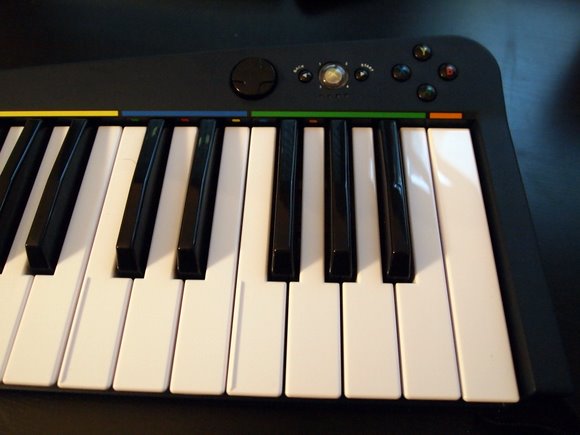
US$80 street, and also available bundled with the Rock Band 3 game.
I’ve handled a lot of “shoulder-mount keyboards,” and the simple reality is, a lot of them have pretty awful ergonomics. The Rock Band keyboard is about the best I’ve handled. It’s light enough that you can hold it in one hand, and compact enough that it’s about the width of a typical adult waist. That means it actually feels like a keytar sized to be played as a keytar.
The keyboard action is just a basic, unweighted synth action, but feels solid enough, and velocity response is consistent. I have to admit: I was very surprised by the quality of the keyboard. You could easily put this alongside so-called “pro” unweighted keyboards in the sub-$200 range and, blindfolded, no one would ever guess this was a game keyboard. I have no idea who built the action (it’s labeled “made in China”), but there would be no shame whatsoever in using it.
One oddity: F3, C4, and F4 each have raised ridges on the left-hand side of the keys, in order to delineate the keyboard’s five zones for gameplay. With proper keyboard technique, though, you won’t even feel them, since the pads of your fingers will hit the middle of the keys. (That is, unless you have larger fingers.)
You also get a standard set of game controllers, and everything either sends a MIDI message or is used to toggle features on the keyboard. Not a button goes to waste.
The touchpad on the neck is probably the weak spot of the design. It’s usable, and conveniently located, but its response is pretty hard to control exactly. It’s also hard to hold down the overdrive button while using it, which is the only way to get to pitch. Then again, your left hand is likely busy holding the keyboard, anyway, just as on all keytars, so a pedal seems the better solution for anything really expressive. I’ll see how I adjust to it over time, though.
MIDI Mapping
As with the guitar, operation is simple: plug in a MIDI cable.
Yeah, okay. There is something to be said for old-fashioned MIDI, huh?
Once you’ve plugged in, you get some surprisingly robust MIDI implementation:
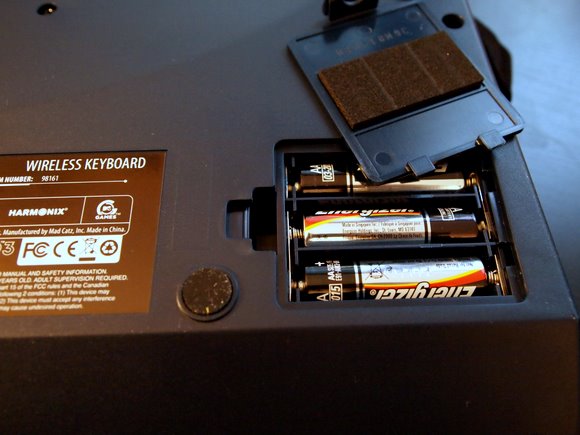
Keyboard: 25 keys transmit normally, with velocity. (No aftertouch. I’m glad we get velocity.)
In drum mode, the keyboard transmits General MIDI drum parts, which is, of course, handy for playing drum patches. (It’s also handy for confusing the hell out of you if you didn’t know that’s what it did.)
Touch controller: 1-axis modulation. Hold down the “Overdrive” button, and while that button is held, it sends pitch bend – which makes pitch bend nearly unusable. (Too bad they didn’t just make the Overdrive button a straight toggle.) Works well enough for Modulation, though.
Octave: Octave up and down shift uses the X and B keys (on Xbox, or the left and right action keys), just as on the guitar – and just as on the guitar, you get four up, four down. Octave feedback is available on the LEDs.
Program change: Top and bottom action keys increment or decrement, respectively, program change. (Y and A on Xbox.)
D-pad buttons: As on the guitar, these toggle functions, though for the keyboard all four are mapped instead of three. Up turns on and off drum mapping, right changes the pedal to foot controller, down changes pedal to channel volume, and left changes the pedal to expression.
Transport controls: The Back, Guide, and Start buttons on the Xbox gamepad correspond to Stop, Continue, and Start MIDI messages, respectively – so if you’re tracking your next Rock Band Network song in Reaper, you can control your takes right from the keyboard.
Pedals: There’s one pedal port on the side. More on how to use this soon; I haven’t yet tried it. It’s a 3.5mm jack, but I have to find out the voltage. Stomp should work fine with a standard Rock Band drum pedal, and in the default mode, you can use that for a damper pedal. For expression, you need something that sends analog voltage.
Panic: Press the Back, Guide, and Start buttons simultaneously to switch all notes off. (Curiously, this appears not to be the same as on the guitar, but I can only test the keyboard to know for sure.)
MIDI channel: 1. Always. It’s always MIDI channel 1.
Note that there is no accelerometer output from the keyboard. Too bad; that would have been fun (and likely more useful than the two-fingered salute you have to do to get pitch bend from the touch strip). In fact, this sounds like a ripe opportunity for a little hack – maybe a strap-on board that transmits accelerometer and MIDI via Bluetooth.
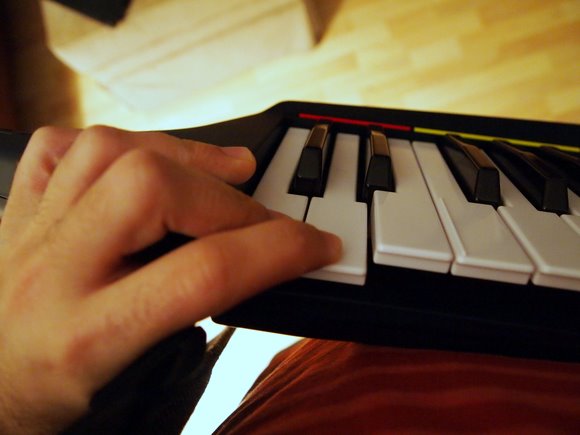
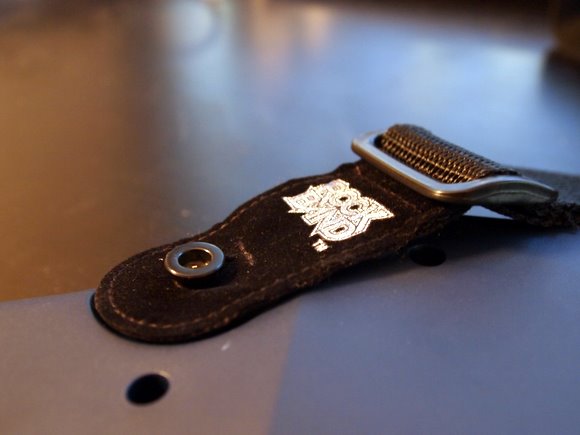
Applications
Bottom line is, this thing is a joy for controlling computer synths or hardware, and may have just become my portable keyboard of choice, just because it’s fun to strap on. Of course, if you don’t care about the “keytar” form factor, any number of inexpensive keyboards will give you real pitch and mod wheels and some knobs. But if you want to play a keytar, this game controller has become, bizarrely, a must-buy.
As we find out more about the pedals, I’ll share that. In the meantime, enjoy.
